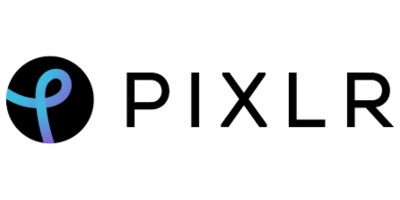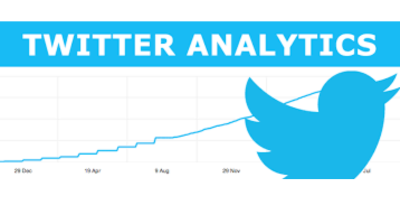How to Build Best Social Media Marketing Strategy in 15 steps and Tools to Use
The best social media marketing strategy and tools can vary depending on your business goals, target audience, and the social media platforms you’re using. However, here’s a general framework to help you develop an effective social media marketing strategy, along with some popular tools to consider.
Social Media Marketing Strategy:
Building effective social media advertising strategies requires careful planning, a deep understanding of your target audience, and ongoing optimization. Here are the steps to create a successful social media marketing strategy.
1.Set Clear Goals:
Determine what you want to achieve with your social media advertising campaign. Common goals include increasing brand awareness, driving website traffic, generating leads, boosting sales, or growing your social media following. Ensure your goals are specific, measurable, achievable, relevant, and time-bound (SMART).
2.Know Your Audience:
Research and define your target audience. Understand their demographics, interests, behaviors, pain points, and preferences. This information will help you create content and ads that resonate with your audience.
3.Choose the Right Platforms:
Select the social media platforms that align with your target audience and goals. Different platforms appeal to different demographics and offer various advertising options. Common platforms for social media marketing include Facebook, Instagram, Twitter, LinkedIn, Pinterest, and youtube.
4.Competitor Analysis:
Study your competitors’ social media advertising strategies. Analyze their successful campaigns and learn from their mistakes. Identify gaps in the market that you can exploit.
5.Develop Compelling Content:
Create high-quality, engaging content that suits each platform. Use a mix of text, images, videos, and other media formats. Your content should align with your brand and resonate with your target audience.
6.Ad Creative:
Design eye-catching ad creatives that grab attention and convey your message effectively. Ensure that visuals and copy are consistent with your brand’s identity and messaging.
7.Budget Allocation:
Determine your social media advertising budget based on your goals and the platforms you choose. Allocate your budget wisely to maximize your reach and results.
8.Ad Targeting:
Use advanced targeting options provided by social media advertising platforms to reach your ideal audience. You can target users based on demographics, interests, behaviours, location, and more.
9.A/B Testing:
Run A/B tests to optimize your ad campaigns. Test different ad creatives, headlines, calls to action, and audience segments to identify what works best. Use the insights gained to refine your social media marketing strategy.
10.Campaign Monitoring:
Regularly monitor the performance of your social media advertising campaigns. Track key metrics such as click-through rate (CTR), conversion rate, cost per conversion, and return on ad spend (ROAS).
11.Optimization:
Use the data from your monitoring to make adjustments to your campaigns. Optimize underperforming ads, increase budget for successful ones, and refine your targeting parameters.
12.Ad Schedule:
Schedule your ads to run at times when your target audience is most active on social media. This can vary by platform and industry, so research and testing are essential.
13.Adherence to Policies:
Ensure that your ads comply with the policies and guidelines of each social media platform. Violating these rules can lead to ad disapproval or account suspension.
14.Analytics and Reporting:
Use social media analytics tools or the platforms’ built-in reporting features to assess the overall performance of your campaigns. Prepare regular reports to track progress toward your goals.
15.Adapt and Evolve:
Social media marketing and user behaviours are continually evolving. Stay updated with industry trends and adjust your strategies accordingly.
Remember that social media advertising is an ongoing process, and success may not happen overnight. Continuously refine your strategies based on data and feedback to achieve better results over time.
Social Media Marketing Tools:
1.Social Media Management Tools:
1.Hootsuite:

Hootsuite is a social media management platform that helps individuals and businesses manage their social media accounts and content more efficiently. It provides a centralized dashboard where users can schedule and publish posts, monitor social media conversations, track engagement metrics, and manage multiple social media accounts from various platforms, such as Facebook, Twitter, Instagram, LinkedIn, and more
2.Buffer:

In the context of social media management, a “buffer” can also refer to a software or service like “Buffer” that allows users to schedule and manage their social media posts. Such tools enable users to plan and automate their social media content distribution across various platforms.
3.Sprout Social:

Sprout Social is a social media management and engagement platform designed to help businesses and organizations manage their social media presence more effectively. It offers a range of features and tools that enable users to schedule and publish posts, monitor social media activity, analyze performance, and engage with their audience across various social media platforms.
2.Content Creation and Editing:
1.Canva (for graphics):

Canva is a popular online graphic design platform that allows users to create a wide range of visual content, including social media graphics, posters, presentations, flyers, and more. It was founded in 2012 by Melanie Perkins, Cliff Obrecht, and Cameron Adams. Canva offers a user-friendly interface and a vast library of templates, images, fonts, and other design elements that make it accessible to both professionals and non-designers.
2.Adobe Spark (for videos):

Adobe Spark is a suite of creative tools and applications developed by Adobe Systems. It is designed to enable individuals and businesses to easily create graphics, web pages, and videos without the need for advanced technical skills or extensive design experience. Adobe Spark offers three main components:Spark Post,Spark Page,Spark Vedio.
3.Pixlr (for image editing):

Pixlr is a popular online photo editing and graphic design tool. It is known for its user-friendly interface and a wide range of features that make it accessible to both beginners and experienced graphic designers. Pixlr offers both web-based and mobile app versions, making it versatile and accessible on various devices.
3.Social Media Advertising Tools:
1.Facebook Ads Manager:

Facebook Ads Manager is a powerful advertising platform provided by Facebook that allows businesses and advertisers to create, manage, and track their advertising campaigns on the Facebook and Instagram social media platforms. It offers a wide range of tools and features to help advertisers reach their target audience, maximize their ad performance, and analyze campaign results.
2.Google Ads:

Google Ads is an online advertising platform developed by Google that allows businesses and advertisers to display ads on Google’s search engine and other affiliated websites. It is one of the most popular and widely used online advertising tools, and it operates on a pay-per-click (PPC) model, where advertisers pay only when a user clicks on their ad.
3.LinkedIn Advertising:

LinkedIn Advertising is a digital advertising platform offered by LinkedIn, the professional social networking platform. It allows businesses and advertisers to create and promote various types of ads to a highly targeted audience of professionals and businesses. LinkedIn Advertising can be a powerful tool for businesses looking to reach a specific B2B (business-to-business) audience or professionals in various industries.
4.Analytics and Reporting:
1.Google Analytics:

Google Analytics tracks the number of visitors to a website, their geographic location, the devices they use, and the sources that led them to the site (e.g., search engines, social media, referral links).
2.Facebook Insights:

This provides an overview of your Page’s performance, including the number of likes, reach, and engagement over a specific time period.
3.Twitter Analytics:

Twitter Analytics provides insights into how your individual tweets are performing. You can see the number of impressions (how many times your tweet was viewed), engagement (likes, retweets, replies), and the engagement rate.
5.Influencer Marketing Platforms:
1.AspireIQ:

AspireIQ helps brands discover relevant influencers and content creators based on various criteria such as demographics, interests, engagement, and more.
2.Influencity:

They offered features like influencer search and discovery, campaign management, and analytics to measure the impact and ROI (Return on Investment) of influencer marketing campaigns. Influencity’s platform allowed businesses to find influencers who aligned with their brand and target audience, making it easier to create authentic and engaging content.
3.Upfluence:

Upfluence is a marketing software and influencer marketing platform that helps brands and businesses identify, connect with, and manage relationships with social media influencers and content creators. It provides tools and services that enable companies to run influencer marketing campaigns, track performance metrics, and measure the impact of influencer collaborations.
